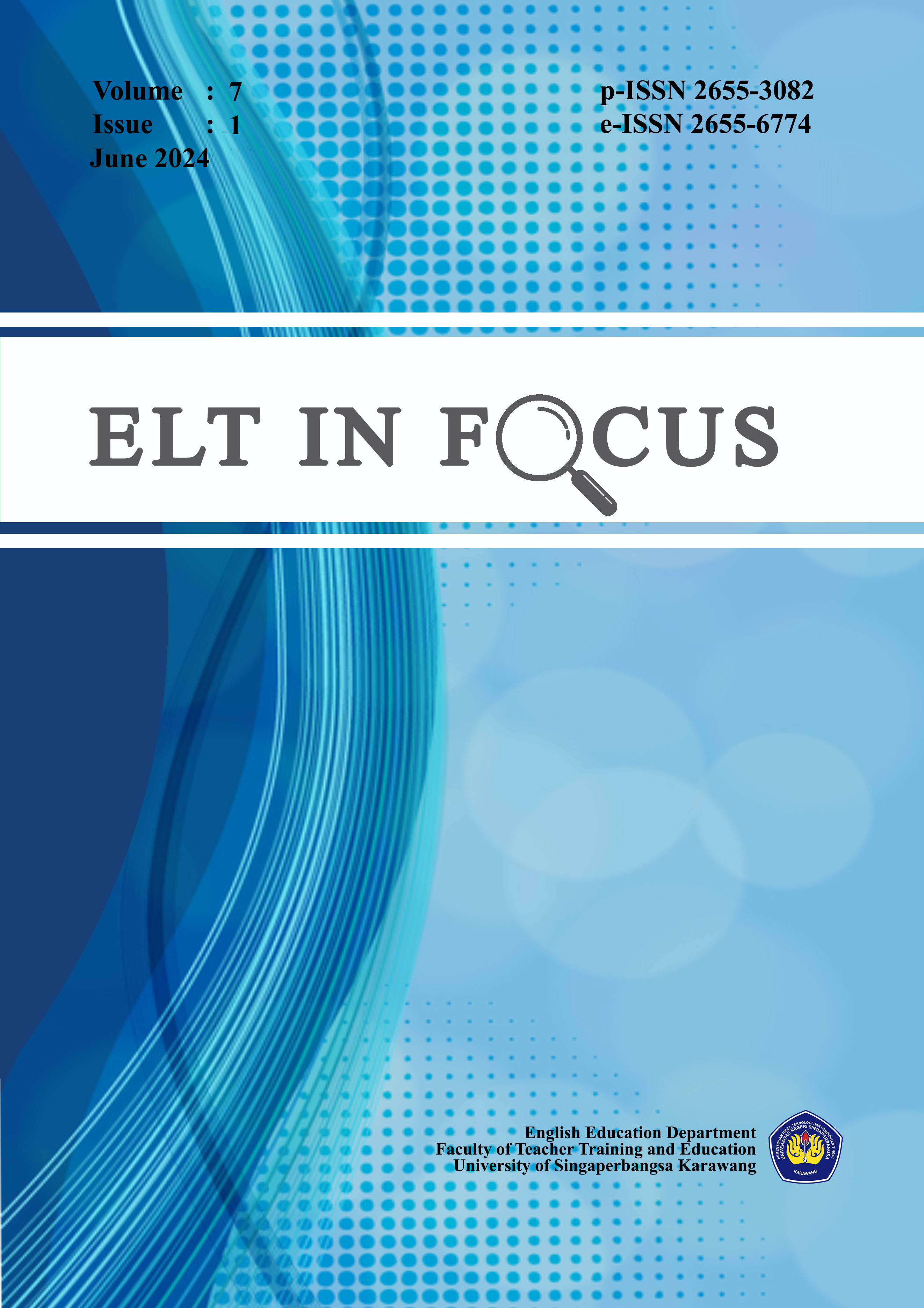Exploring undergraduate students’ thesis abstracts: A discourse analysis of thematic progression
DOI:
https://doi.org/10.35706/eltinfc.v7i1.11236Abstract
The message of the text should convey readers’ attention and understanding. Thematic progression can be one of the ways to bridge readers’ attention and to provide the coherence between main aspects of the text. Then, coherence shows significant point in determining the text’s message comprehend by the readers. This research therefore aims to analyze the thematic progression occurred in abstracts of bachelor’s degree theses. The occurrence of thematic progression is analyzed based on three patterns of Thematic Progression suggested by Eggins (2004). They are theme reiteration, zig-zag pattern, and multiple-theme pattern. Qualitative discourse study which employed thematic development applied in this research. The data were obtained from abstracts written documentation of bachelor degree thesis students. There were 10 abstracts from students of a Private University in Cimahi. The analysis of thematic progression of the clauses shows that theme reiteration emerges as the most applied thematic progression pattern. It can be seen that 82 times (79%) in the students’ abstract are in form of theme reiteration. Then, in applying zig-zag pattern in Thematic Progression are 14 times (13%). The last, multiple-theme pattern appeared as the last choice of Thematic Progression pattern. It emerged in 8 times (8%) out of 104 clauses. To sum up, bachelor’s degree students need to learn more how to combine the Thematic Progression in writing abstract. It is applied to make each sentence coherence and readable to be read. Based on the findings, it is recommended that theme progression analysis can be applied in academic writing class to give control of text organization while writing abstract or other parts of research chapter.
Downloads
Downloads
Published
Issue
Section
License
Copyright (c) 2024 Intan Satriani

This work is licensed under a Creative Commons Attribution-ShareAlike 4.0 International License.




